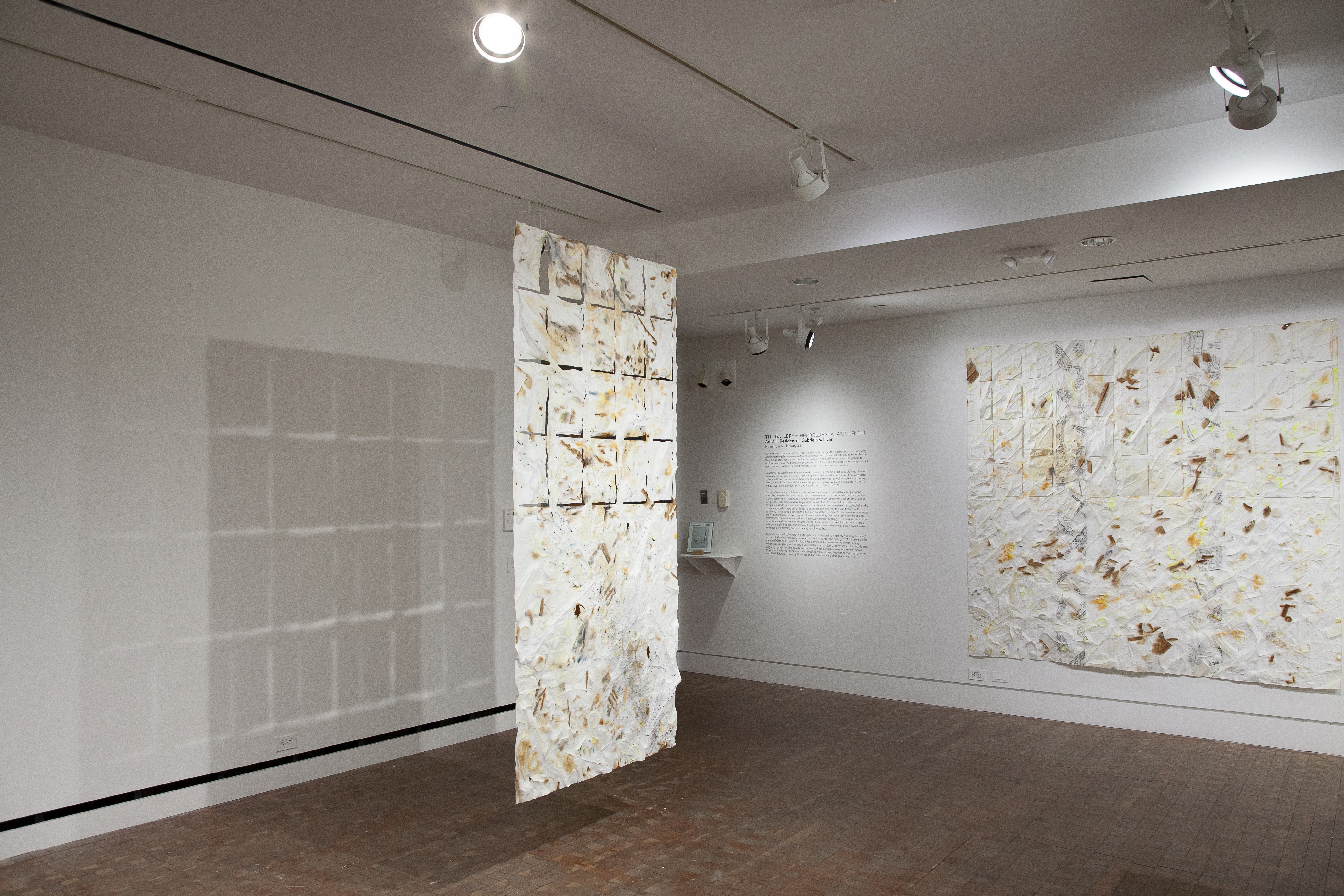
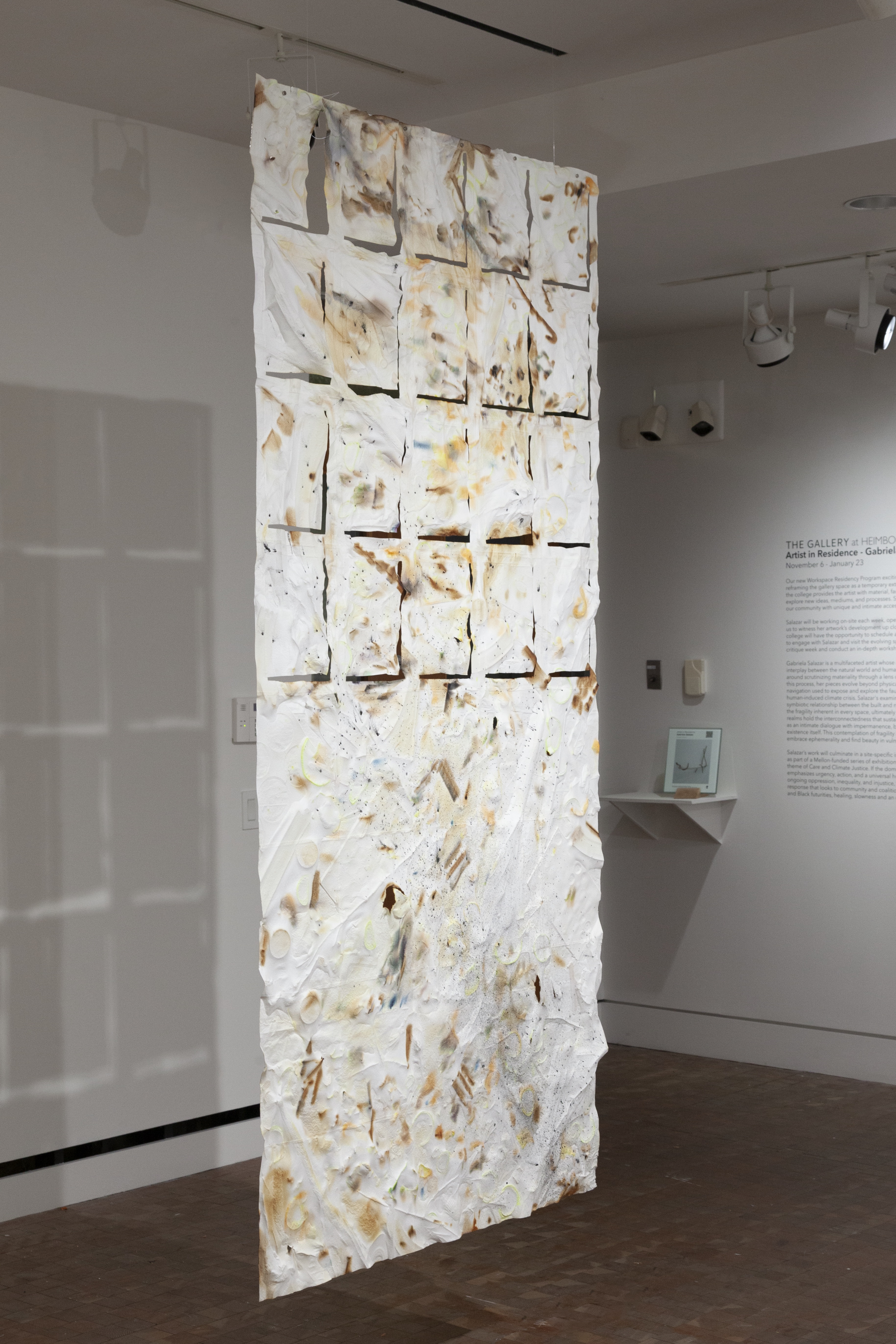





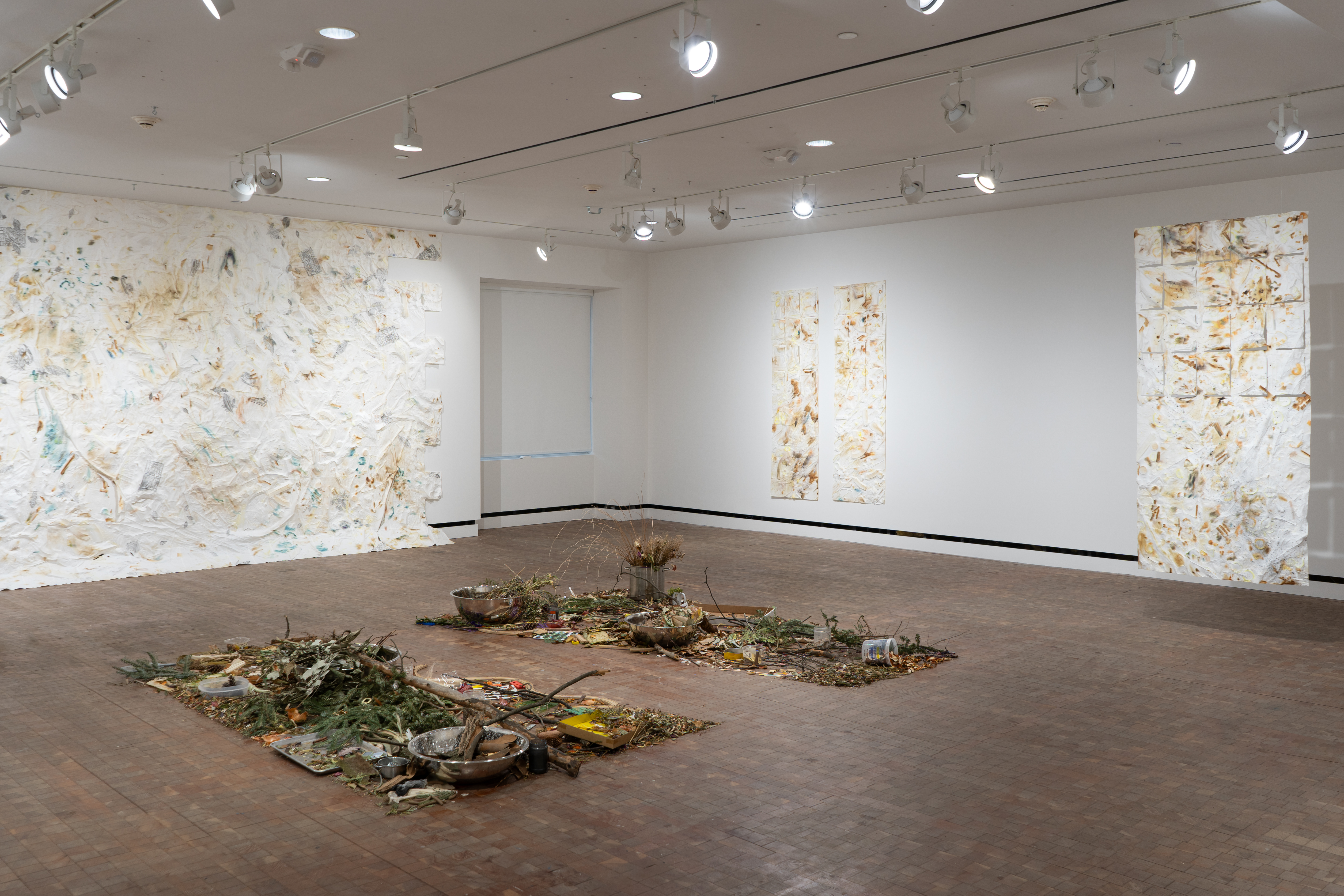
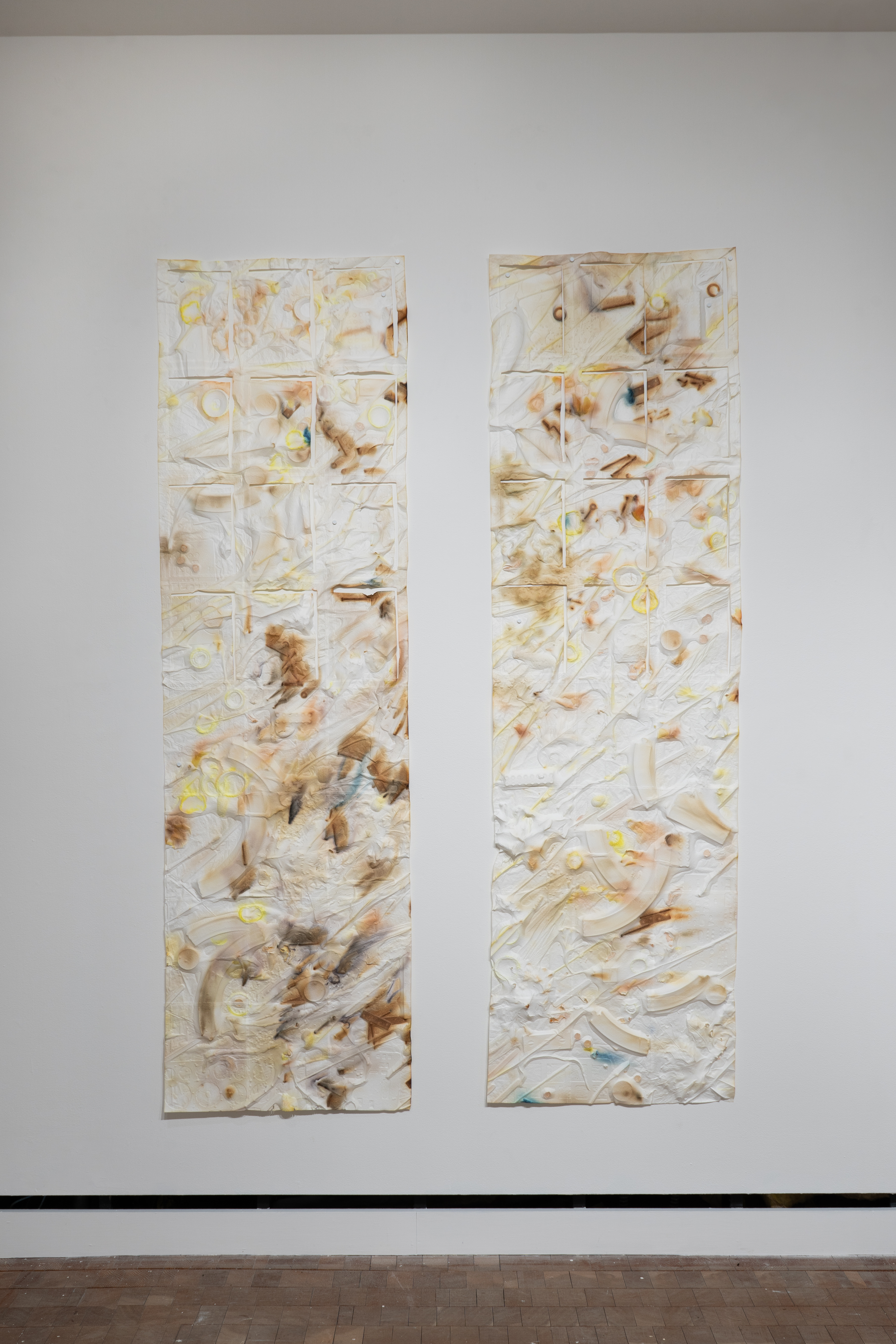
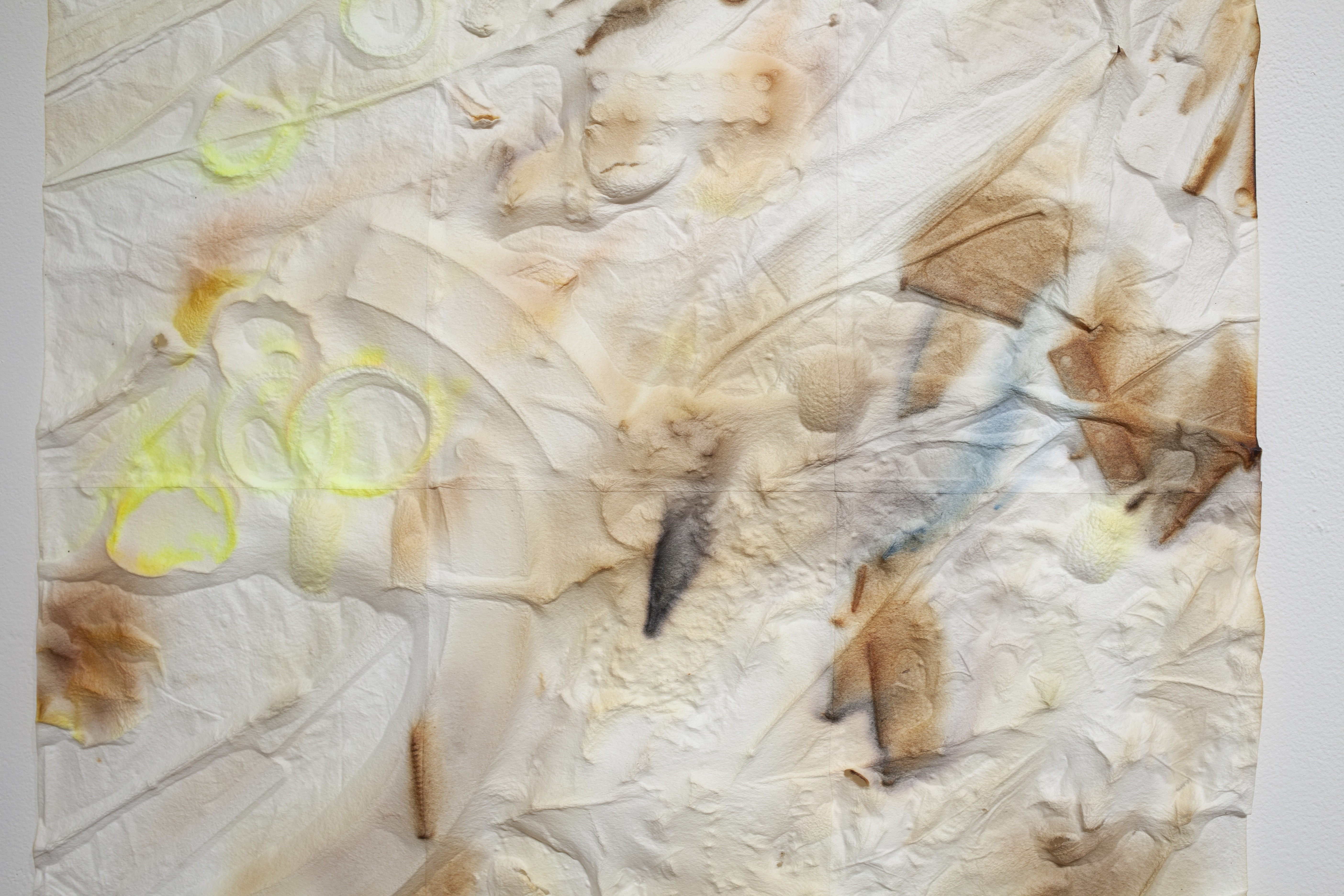

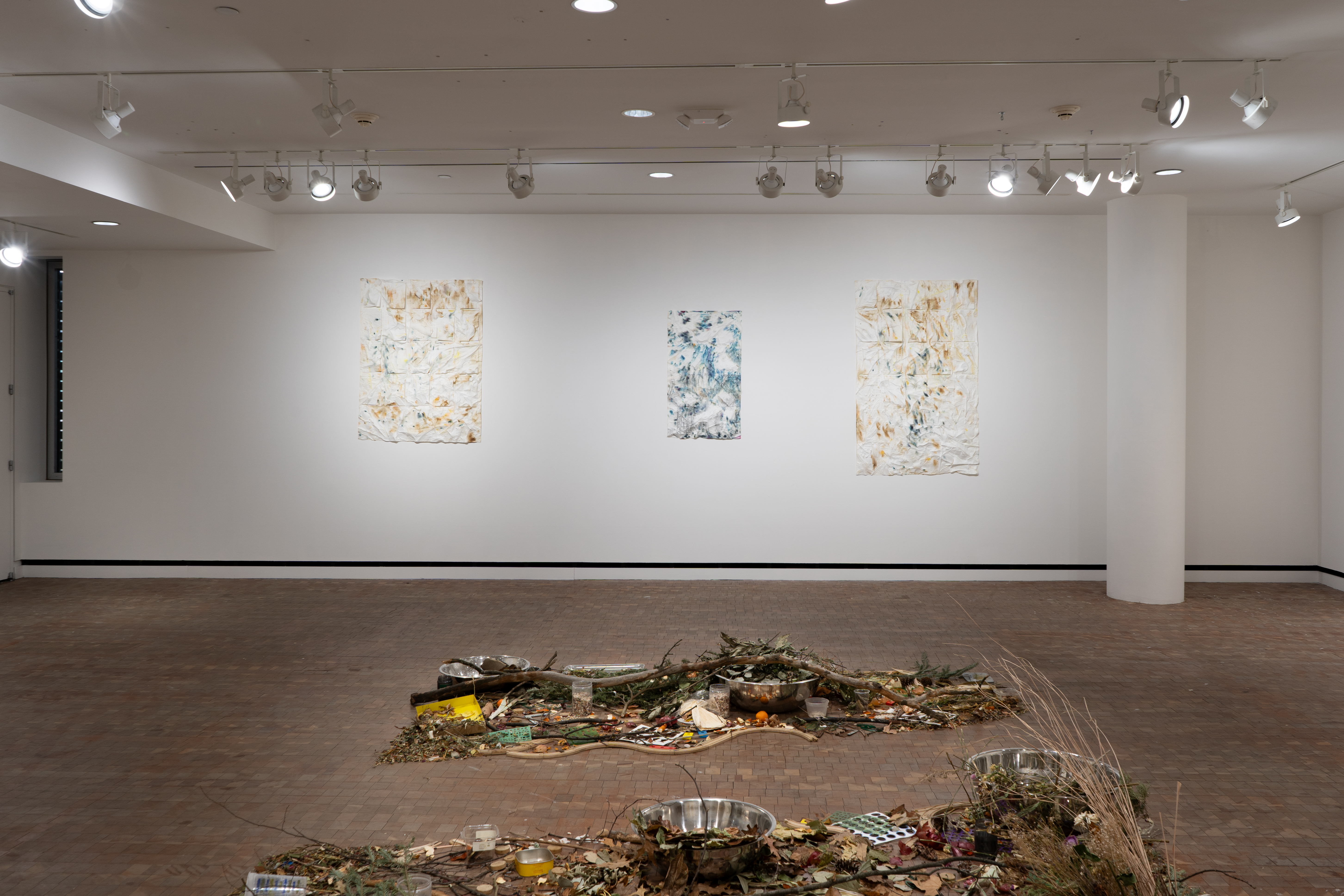
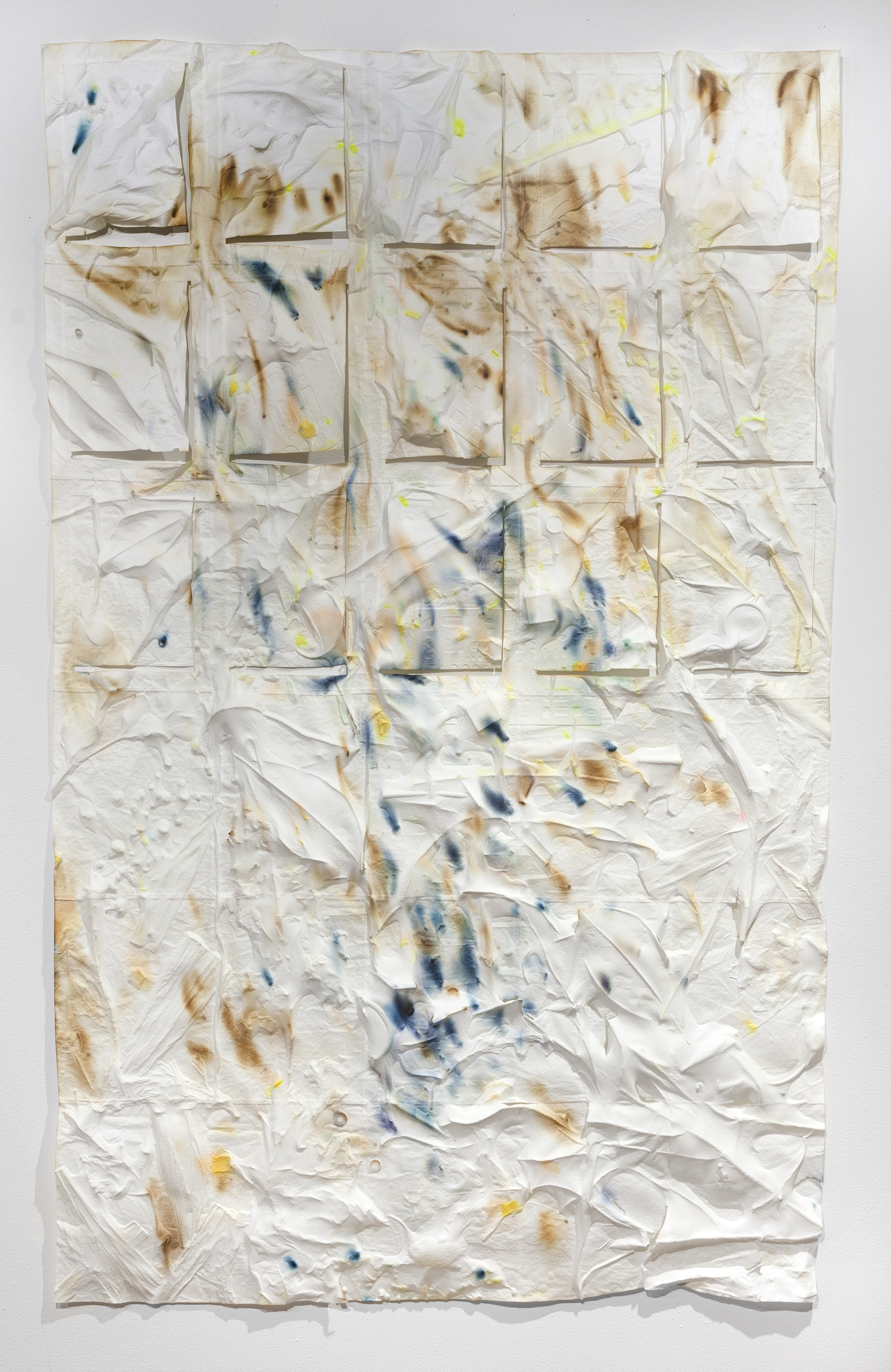
Observed
2024
Photography by Nicole Salazar and McKinzie Trotta.
2024
For Our Work
2024
Arranged materials and containers.
Leaves (One 365 (November, December))
2023
Water soluble paper, leached pigments, graphite.
Leaves (Living Room Looking Northward, Uptown (January))
2024
Water soluble paper, leached pigments, graphite.
Leaves (Dining Room Looking Northward, Uptown (January))
2024
Water soluble paper, leached pigments, graphite.
Leaves (Kitchen Looking East, Courtyard (January))
2024
Water soluble paper, leached pigments.
Leaves (Bathroom Looking East, Courtyard (January))
2024
Water soluble paper, leached pigments, graphite.
Leaves (Lucia’s Room Looking East, Courtyard (January))
2024
Water soluble paper, leached pigments.
Leaves (Studio Looking West, Courtyard (January))
2024
Water soluble paper, leached pigments, graphite.
Leaves (Two, Looking for changes in the light (December))
2023
Water soluble paper, leached pigments.
Leaves (Three, Looking for changes in the light (December))
2023
Water soluble paper, leached pigments.
Photography by Nicole Salazar and McKinzie Trotta.
The Gallery at Heimbold at
Sarah Lawrence College, NY
Responding to the overwhelming scale of the global climate crisis, Salazar’s work focuses on the beauty, fragility, and temporality of the present. The climate crisis “impacts your day-to-day life: your body, your family, your environment,” as Salazar writes, describing how she transforms seemingly banal or unremarkable items into a meditation on an ever-grasping relationship to permanence, care, and safety.
The works in Observed are part of a series Salazar calls “Leaves,” and were all made during her residency at Sarah Lawrence. Laying down prepared sheets of water-soluble paper over various items tied to her intimate world—leaves and branches, food scraps, her architect parents’ drawing stencils, rusty nails, screws, hinges and brackets, and her daughter’s building toys—Salazar then wets the paper until it returns to pulp. As the pulp redries, it becomes a cast of the field of matter, and absorbs the pigments of the plants and objects. These works shift in scale, between that which can be held in one’s hand, and the macro-and-microcosmic, as the applied pigments, residues of plant matter, gesture to other worlds.
For Observed, Salazar uses the windows and layout of her home as the embedded structure for these casts and their installation. In one wall-sized work titled “Leaves (One 365 (November, December)),” Salazar reflects on the 365 days of the year 2023, a sheet of letter–sized paper representing each day. The embedded stencils, hinges, and Duplo Legos remind us of the intergenerational transference of knowledge of our built environment, and the ways in which we access our relationship to its construction and endurance. Even arrested as they are in the “Leaves,” many of the pigments are not light-fast and will fade. Realizing this, we are reminded that even the most durable of objects and states are also in a constant, if invisible, flux. In looking, we are asked to move between different definitions of time, between time’s moment-to-moment unfolding in the now, and the impossibility of duration. What does it mean to observe, to care for, to revere, our ephemeral material world?
On February 27, 2024, in a process of creating and sharing time and attention, Salazar will break apart and distribute all of “Leaves (One 365 (November, December))” to the exhibitions’ final viewers and visitors. This action echoes her Climate Museum-commissioned work “Low Relief for High Water,” which was a water-soluble cast of the windows of her childhood home, broken apart and shared on October 10, 2021, in Washington Square Park, NYC.
Salazar was the inaugural artist in the Gallery’s Workspace Residency Program in fall 2023, and her exhibition was made possible by a grant from the Mellon Foundation.
Sarah Lawrence College, NY
Responding to the overwhelming scale of the global climate crisis, Salazar’s work focuses on the beauty, fragility, and temporality of the present. The climate crisis “impacts your day-to-day life: your body, your family, your environment,” as Salazar writes, describing how she transforms seemingly banal or unremarkable items into a meditation on an ever-grasping relationship to permanence, care, and safety.
The works in Observed are part of a series Salazar calls “Leaves,” and were all made during her residency at Sarah Lawrence. Laying down prepared sheets of water-soluble paper over various items tied to her intimate world—leaves and branches, food scraps, her architect parents’ drawing stencils, rusty nails, screws, hinges and brackets, and her daughter’s building toys—Salazar then wets the paper until it returns to pulp. As the pulp redries, it becomes a cast of the field of matter, and absorbs the pigments of the plants and objects. These works shift in scale, between that which can be held in one’s hand, and the macro-and-microcosmic, as the applied pigments, residues of plant matter, gesture to other worlds.
For Observed, Salazar uses the windows and layout of her home as the embedded structure for these casts and their installation. In one wall-sized work titled “Leaves (One 365 (November, December)),” Salazar reflects on the 365 days of the year 2023, a sheet of letter–sized paper representing each day. The embedded stencils, hinges, and Duplo Legos remind us of the intergenerational transference of knowledge of our built environment, and the ways in which we access our relationship to its construction and endurance. Even arrested as they are in the “Leaves,” many of the pigments are not light-fast and will fade. Realizing this, we are reminded that even the most durable of objects and states are also in a constant, if invisible, flux. In looking, we are asked to move between different definitions of time, between time’s moment-to-moment unfolding in the now, and the impossibility of duration. What does it mean to observe, to care for, to revere, our ephemeral material world?
On February 27, 2024, in a process of creating and sharing time and attention, Salazar will break apart and distribute all of “Leaves (One 365 (November, December))” to the exhibitions’ final viewers and visitors. This action echoes her Climate Museum-commissioned work “Low Relief for High Water,” which was a water-soluble cast of the windows of her childhood home, broken apart and shared on October 10, 2021, in Washington Square Park, NYC.
Salazar was the inaugural artist in the Gallery’s Workspace Residency Program in fall 2023, and her exhibition was made possible by a grant from the Mellon Foundation.